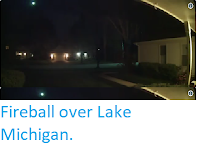Asteroid 2019 JV5 passed by the Earth at a distance of about 481 900
km (1.25 times the average distance between the Earth and the Moon, or
0.32% of the distance between the Earth and the Sun), slightly after 2.15 pm
GMT on Wednesday 8 May 2019. There was no danger of
the asteroid hitting us, though were it to do so it would not have
presented a significant threat. 2019 JV5 has an estimated
equivalent
diameter of 4-16 m (i.e. it is estimated that a spherical object
with
the same volume would be 4-16 m in diameter), and an object of this
size
would be expected to explode in
an airburst (an explosion caused by superheating from friction with the
Earth's atmosphere, which is greater than that caused by simply
falling, due to the orbital momentum of the asteroid) in the atmosphere
between 43 and 25 km above the ground, with only fragmentary material
reaching the Earth's surface.
The calculated orbit of 2019 JV5. Minor Planet Center.
2019 JV5 was discovered on 9 May 2018 (the day after its closest approach to the Earth) by the Zwicky Transient Facility at Palomar Observatory in California. The
designation 2019 JV5 implies that it was the 141st asteroid (asteroid V5 -
in numbering asteroids the letters A-Y, excluding I, are assigned
numbers from 1 to 24, with a number added to the end each time the
alphabet is ended, so that A = 1, A1 = 25, A2 = 49, etc., which means that V5 = 21 + (24 X 5) = 141)
discovered in the first half of May 2019 (period 2019 J).
2019 JV5 has a 642 day orbital period and an eccentric orbit
tilted at an angle of 7.60° to the plane of the Solar System, which
takes it from 0.83 AU from the Sun (i.e. 83% of he average distance at
which the Earth orbits the Sun) to 2.08 AU from the Sun (i.e. 208% of
the
average distance at which the Earth orbits the Sun, and considerably outside the orbit of the planet Mars). It is therefore
classed as an
Apollo Group Asteroid (an asteroid that is on average further from the
Sun than the Earth, but which does get closer). This means that close
encounters between the asteroid and Earth occasionally occur, with the
next predicted
in May 2112.
See also...
Follow Sciency Thoughts on Facebook.







